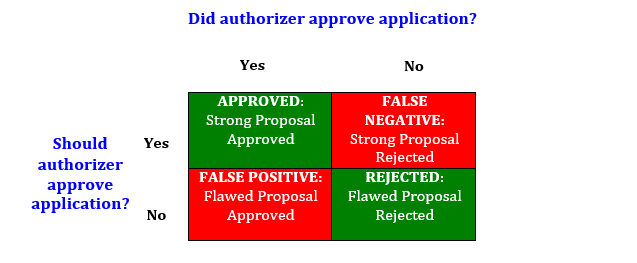AEI just released a very good, short report on charter authorizing, “The Paperwork Pileup: Measuring the Burden of Charter School Applications.”
It argues that applications have become too onerous. Authors McShane, Hatfield, and English found authorizers are requiring more and more paperwork from prospective founders, moving chartering away from outcomes-focused accountability. As a former authorizer, I agree with much of the report. In my experience, government programs tend toward rule-based compliance and sclerosis. Systems eventually suffer an accretion of rules, and central administrators create policies to simplify their work at the expense of those they monitor. More specifically, I concur that some charter applications seem to equate length with rigor, ask for information with limited bearing on school quality, and pose major obstacles to first-time operators.
But some of the criticisms aimed at the report are also fair. NACSA believes its recommendations would threaten accountability. The organization defends, for example, application questions related to discipline, safety, and budgeting. They also pointedly note that some organizations calling for less regulation lack practical “experience working with charter schools and authorizers.” NACSA, on the other hand, “has helped our nation’s charter school authorizers improve how they do their jobs for over 15 years.”
A similar we’ve-actually-done-this-work note is struck in the critique by Fordham’s Ohio outpost, which has authorized for a decade. It argues that a number of practices criticized in the report are “valuable, even vital.” These include questions related to school goals, serving high-need students, and the rationale for targeted geographies.
Authorizers would be well served to read the AEI report and the NACSA and Fordham responses. They’ll find practical advice and questions worth mulling over. But policymakers and thought leaders also have much to gain from engaging here. My view is that the incentives faced by authorizers make extensive regulation not just predictable but rational.
If angels submitted all charter applications, each application could be approved. But that’s not the case; fallible humans submit proposals, and the schools they develop are of widely varying quality. If angels staffed authorizer offices, they’d use their omniscience to divine which applications would lead to great schools and which would not. But humans have to make these imperfect forecasts.
Whether diagnosing an illness, predicting which college athletes will succeed in the pros, or an infinite number of other judgments based on limited information, our judgments are always subject to “Type I” and “Type II” errors. Since we can’t perfectly place every instance in the correct “yes” or “no” category, we end up with “false positives” (we say “yes” when it’s “no”) and “false negatives” (“no” when it’s “yes”).
Since these errors are inevitable, we must decide in each exercise which type is worse. In medicine, false negatives can be fatal—an ill person wasn’t diagnosed. So we prefer false positives (identifying more people for further tests). In the criminal justice system, meanwhile, a false positive sends an innocent person to jail. We’d rather tolerate some false negatives, so we set the bar at “beyond a reasonable doubt” not “51-49.”
My argument is that authorizers have huge incentives to minimize false positives (the approval of flawed proposals). That leads to acute risk aversion, which produces over-regulation.

Consider, from an authorizer’s viewpoint, the costs of okaying a school that later fails. You’ve jeopardized the education of hundreds of kids. You’ve invested your and the school’s resources in an unsuccessful venture. If you close the failing school, educators lose jobs, families suffer uncertainty, and you’re publicly pilloried for failing as an authorizer. If you don’t close the school, you’re accused of poorly serving kids and endangering the future of chartering.
Now, from the authorizer’s viewpoint, what’s the cost of false negatives—not approving promising proposals? Relatively little. You’ll wonder if the school could’ve succeeded, but that will be conjecture. Some might attack you for not making additional educational options available. But you can cite the proposal’s flaws and argue you’re standing up for accountability.
With such huge costs associated with false positives and far fewer with false negatives, authorizers behave rationally when adding front-end barriers. Their probing on curriculum, discipline, goals, mission, staffing, and more should be seen in this context. My hypothesis is that, until this incentive structure is changed, authorizers will always—in McShane, Hatfield, and English’s words—tend toward being “risk-averse to the detriment of innovation.”
Mike McShane and his colleagues have done the field a service by critiquing the trend in charter applications, and NACSA and Fordham have done the same by explaining why the trend makes sense to authorizers. I think a useful next step—one on which they all might collaborate—is asking if the incentives can be changed. Is it possible to decrease the costs of false positives? Is it possible to increase the costs of false negatives?
– Andy Smarick
This first appeared on Flypaper.


